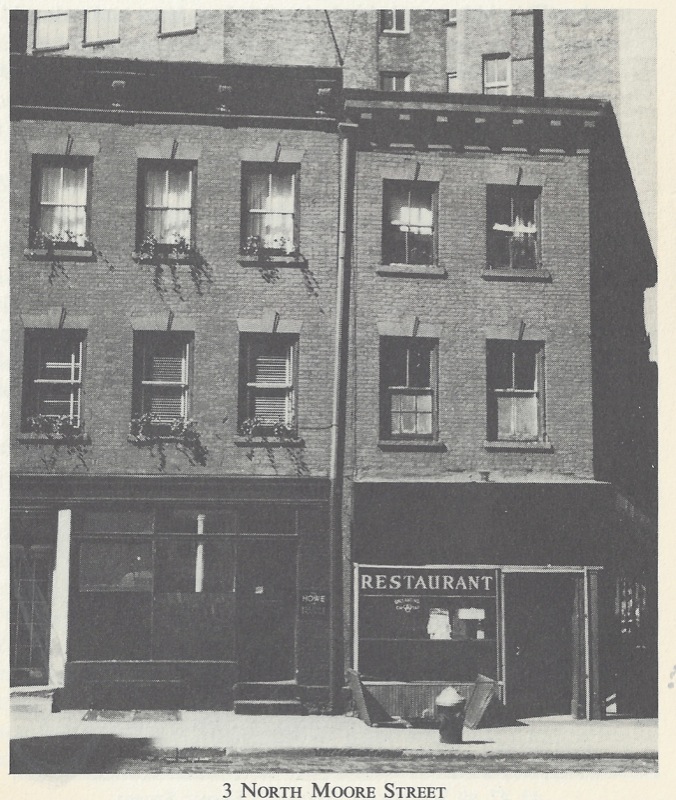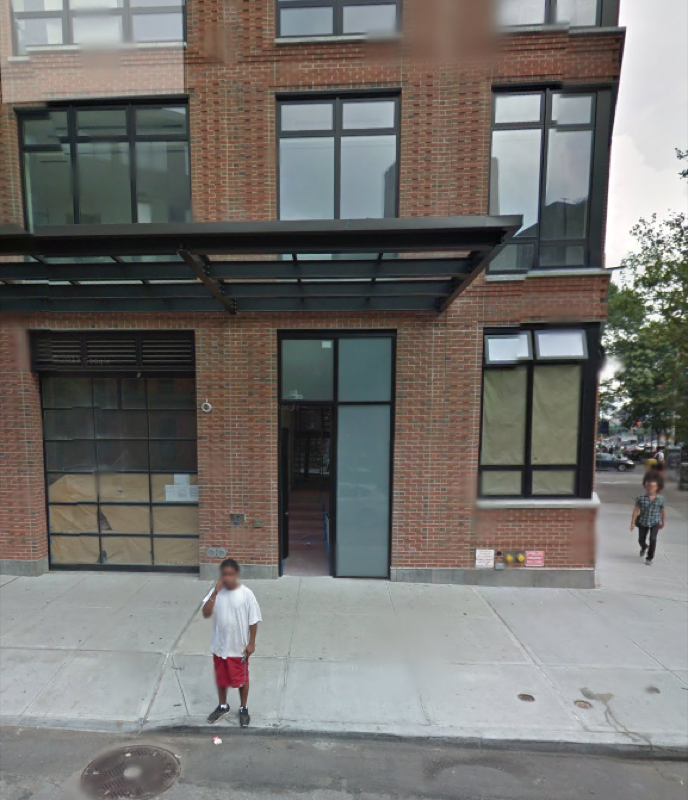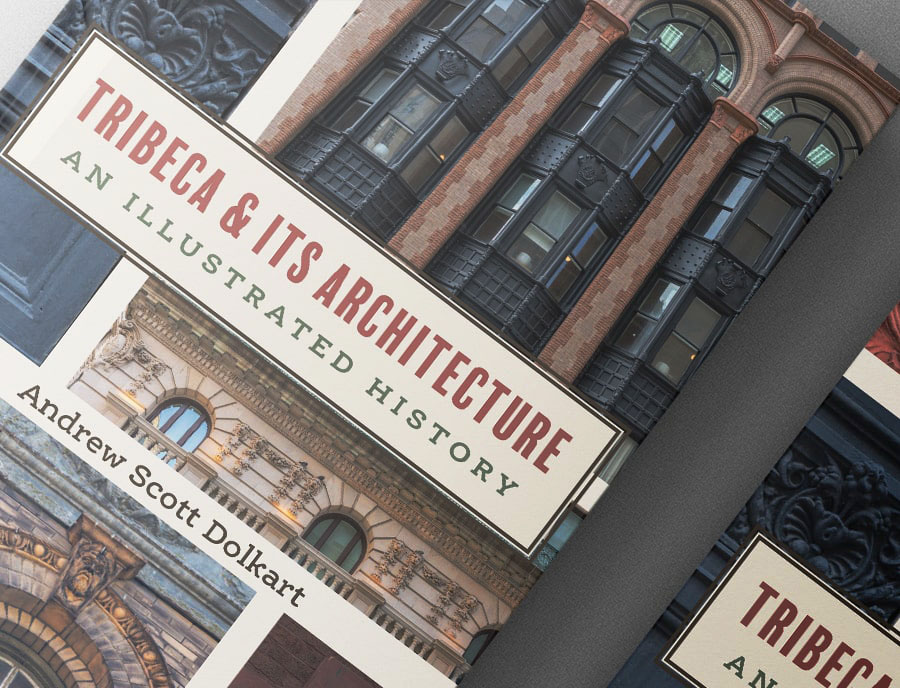Tribeca Before and After: 3 North Moore Street and 240 West Broadway
The top photo is obviously the “before” photo. It is of 3 North Moore in the early 1960’s and can be found in Ada Louise Huxtable’s book “Classic New York: Georgian Gentility to Greek Elegance” (Anchor Books, 1964). Huxtable died last year. She was a architecture critic, first at the New York Times, then at the Wall Street Journal. I have recently emerged from an exhaustive reading of her body of work. She was a persuasive, erudite, and brilliant writer with a knack for metaphor and a wonderful sense of outrage. Reading her old pieces from the Times is like churning through a dissertation on the destructive force of modernism in the 1960’s. But I do not think she was always right in her judgments, so I am not tempted to canonize her. Her analysis is often hamstrung by her belief that architecture is supposed to be art. This gives rise to what reads as a constant irritability with the reality that there is no art to be found in 99% of architecture. It is as if Huxtable were thinking: here I be, all dressed up as an architecture critic and there are too few buildings worth dancing with at this ball. This belief puts her at war with her own highly-developed sense of urbanism and contextual harmony. Most architecture critics seem to have this problem. But all that is a separate essay.
In “Classic New York”, I find Huxtable at her best. In her chapter, “Survivors: Accidental and Anonymous” she quotes James Fenimore Cooper, Talbot Hamlin and Montgomery Schuyler. They all describe with pleasure a vernacular New York middle class house, noting it as distinctive from those found in Boston and Philadelphia. Then on page 36-37 we stumble on two pictures on a double page spread. They are of what is now Tribeca: 2 White Street (still standing) and 3 North Moore, lost to the wrecking ball at an unknown point in time between 1964-1994.
The photo here is entitled “3 North Moore”. It is two federal era buildings with simple cornices dating from the early 1800’s. Loving occupants happily occupy the upper floors – note the curtains and the ivy in the window boxes below their splayed lintels with keystones. There is a homely restaurant on the ground floor, of the soda-fountain kind that was once ubiquitous when Tribeca had a working class. This ensemble of humble buildings entranced Huxtable. She calls them “all small gems of c. 1800 vintage”.
What became of these charming homes? Was there a fire? Were they demolished via neglect by a slumlord? When I arrived in Tribeca there was only a parking lot here. A year ago, with great speed, up went the new building that in photo 2. The site is not in the historic district so there was no design regulation. It all happened as of right. I walk by there often, trying to come to grips with this new building. It is not a great building, or even a charming one. The developer deserves credit for using a thick brick skin and inserting some kind of patterning on it. And the fake awning seems misplaced and wrong for the block, so B for effort but C for execution. Arguably, these elements (scale, materials, and pattern) make it blend in. But the awning really is off. The windows seem too large for the block, but not horribly so. They certainly seem too large for the owners, as privacy seems to be a problem in the occupied apartments: the shades and curtains are almost always drawn. Overall, this building seems to be a slightly better than average example of the “abstractly contextual” design strategy. At least it is not a skyscraper. But what is it? Not much. Yet by letting itself be ignored it has some grace. It allows the eye to roam to more interesting sites around it in the historic district. I have not been inside, but since I can see into all the apartments (seems to be six of them) I see them as bright, square boxes of solid utility to their owners. There is a doorman who is a friendly sort of guy. Sadly, I do not see any ivy trailing in window boxes, something that might yet happen, and might yet redeem the building and make up for the loss of what was there before.




